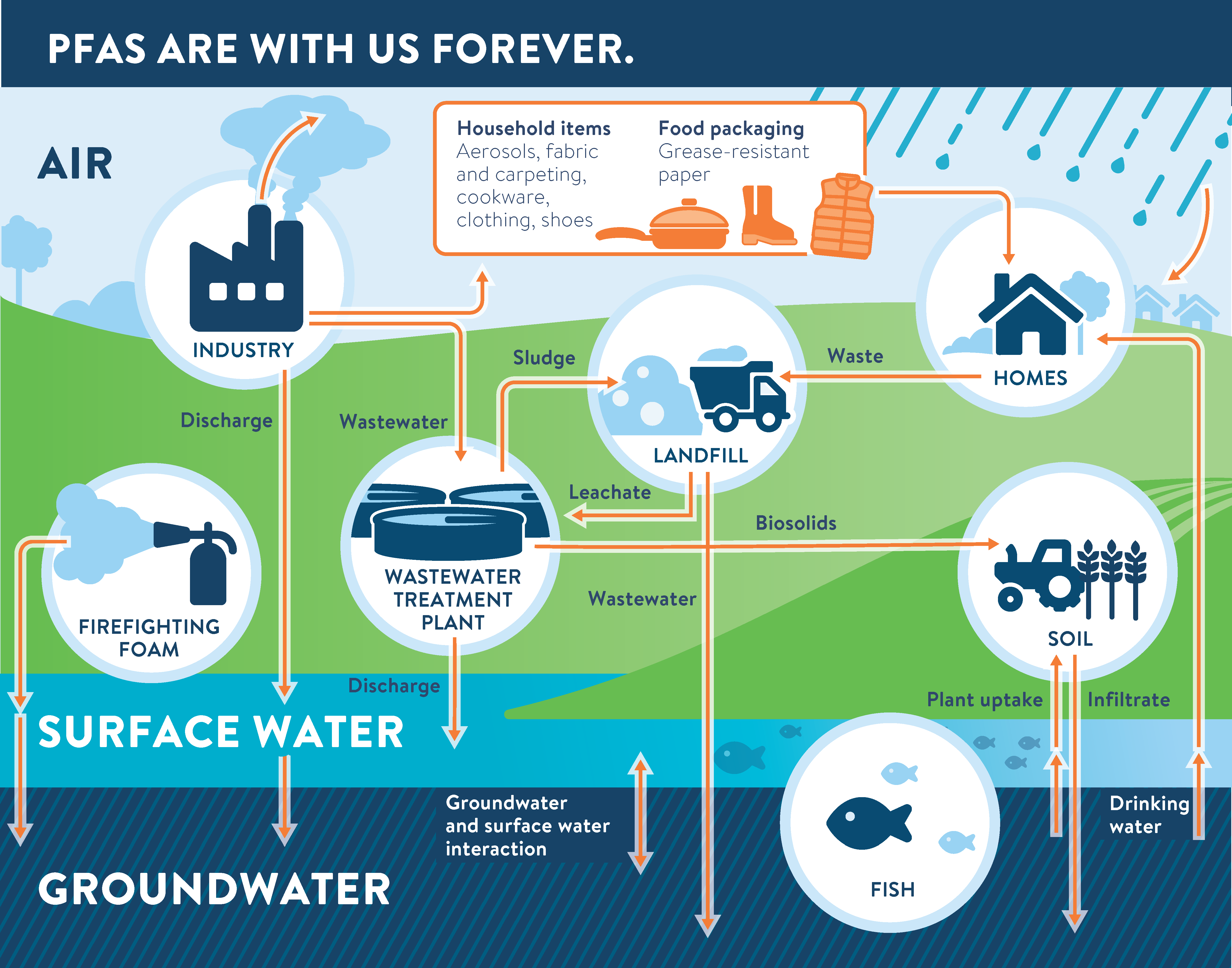How M270 Waste Management Help in the Safe Disposal of Hazardous Materials
Ingenious PFAS Treatment Solutions for Safer Water
The enhancing prevalence of PFAS contamination in water materials requires an important assessment of cutting-edge treatment remedies. Advanced filtration technologies and novel chemical treatments present promising opportunities for decreasing these relentless contaminants. Additionally, emerging bioremediation strategies supply an even more sustainable method to tackling PFAS obstacles. As regulatory frameworks remain to adjust, understanding the performance and scalability of these remedies comes to be vital. What ramifications do these developments hold for public health and environmental remediation, and just how can stakeholders effectively apply them in varied contexts?
Summary of PFAS Contamination
PFAS contamination has emerged as a substantial environmental and public health and wellness worry. Per- and polyfluoroalkyl substances (PFAS) are a group of artificial chemicals known for their perseverance in the atmosphere and body, leading them to be typically referred to as "permanently chemicals." These compounds have actually been widely used in various industries, including firefighting foams, water-repellent textiles, and food product packaging, largely due to their water- and grease-resistant homes.
The widespread use of PFAS has resulted in their detection in dirt, water supplies, and also in the blood of people and pets. Researches have connected PFAS exposure to various health concerns, including developing impacts in infants, body immune system disorder, and various types of cancer. In addition, the ecological persistence of these compounds complicates their degradation and elimination, elevating issues about long-lasting eco-friendly impacts.
Regulatory bodies are progressively implementing strict guidelines to monitor and decrease PFAS levels in drinking water and other ecological tools. As understanding of PFAS contamination grows, it has actually come to be important for communities and markets to look for reliable treatment solutions to alleviate exposure and guard public health.
Advanced Purification Technologies
As the necessity to attend to PFAS contamination magnifies, advanced purification technologies have actually emerged as an essential component in the remediation initiatives intended at getting rid of these consistent chemicals from water resources. These modern technologies leverage advanced mechanisms to efficiently target and catch PFAS substances, which are notoriously resistant to conventional treatment approaches.
One of the most appealing strategies is using granular triggered carbon (GAC), which adsorbs PFAS particles due to its high area and permeable framework. This approach has actually been extensively carried out in both community and industrial settings, demonstrating substantial reductions in PFAS concentrations. Furthermore, ion exchange materials have actually gained grip, specifically made to uniquely bind PFAS ions from water, therefore facilitating their elimination.
Membrane purification innovations, such as reverse osmosis and nanofiltration, additionally reveal effectiveness in PFAS elimination by physically dividing pollutants from water - pfas management. These systems can achieve high levels of pureness, making them ideal for alcohol consumption water applications
Chemical Therapy Technologies
Many chemical treatment technologies are being discovered to efficiently attend to PFAS contamination in water supplies. One appealing Our site strategy includes using advanced oxidation processes (AOPs), which utilize effective oxidants such as ozone, hydrogen peroxide, or chlorine dioxide integrated with UV light to damage down PFAS substances right into less harmful substances. This method has actually demonstrated efficiency in laboratory settings, revealing possible for scalability in real-world applications.
Another ingenious method is the advancement of ion-exchange materials particularly developed to target PFAS. These materials can uniquely adsorb PFAS substances from water, enabling their removal during treatment procedures. Current improvements have improved the efficiency and ability of these materials, making them a favorable option for water therapy facilities.
Additionally, scientists are investigating the usage of chemical agents like persulfate and ferrous ions to boost the degradation of PFAS in contaminated water. These representatives can induce chemical reactions that promote the breakdown of persistent PFAS substances.
Arising Bioremediation Techniques
Recent improvements in chemical treatment developments have actually led the way for discovering bioremediation techniques as a practical alternative for dealing with PFAS contamination. Bioremediation harnesses her response the all-natural metabolic procedures of microbes to break down or transform pollutants, making it an attractive technique for tackling relentless contaminants like PFAS.
Arising techniques in bioremediation include the use of genetically engineered bacteria that can particularly target and damage down PFAS compounds. These microbial strains are being established for their improved destruction capacities, boosting the effectiveness of the removal process. In addition, scientists are investigating the capacity of plant-assisted bioremediation, where certain plant species might uptake and sequester PFAS from contaminated soil and water.
An additional promising strategy is the application of bioaugmentation, which includes introducing valuable bacteria right into polluted atmospheres to enhance the degradation of PFAS. This method can help with much faster remediation timelines and improve general efficiency.

Governing Structures and Requirements
A detailed regulatory framework is important for effectively handling PFAS contamination and ensuring public wellness security. The increasing recognition of per- and polyfluoroalkyl substances (PFAS) as ecological pollutants has prompted various federal and state companies to establish criteria that regulate their presence in water materials. The U.S. Epa (EPA) has developed wellness advisories and is pursuing setting enforceable limits for PFAS in alcohol consumption water.
State-level guidelines vary considerably, with some states taking on more stringent guidelines than those suggested by the EPA. These policies frequently consist of maximum impurity degrees (MCLs) for certain PFAS compounds, tracking demands, and reporting commitments for water energies. In addition, emerging structures concentrate on the remediation of polluted websites, stressing the demand for efficient treatment technologies.

Conclusion
In verdict, the advancement and implementation of cutting-edge PFAS therapy solutions are essential for dealing with the prevalent concern of water contamination. Advanced filtering modern technologies, chemical therapies, and emerging bioremediation techniques jointly present a diverse method to effectively reduce and degrade PFAS levels. As governing frameworks remain to develop, integrating these technologies will be important to protect public wellness and bring back the integrity of infected water resources, ultimately adding to a cleaner and safer environment.